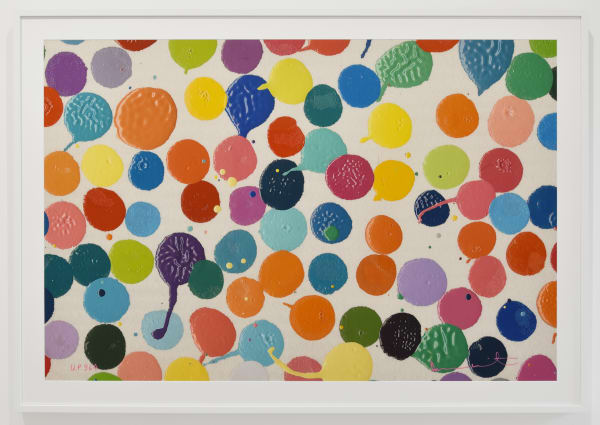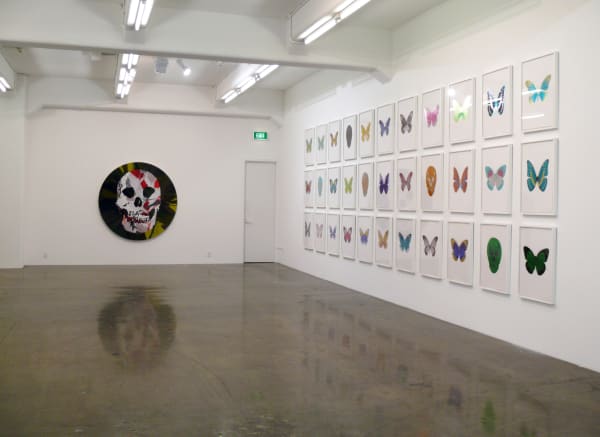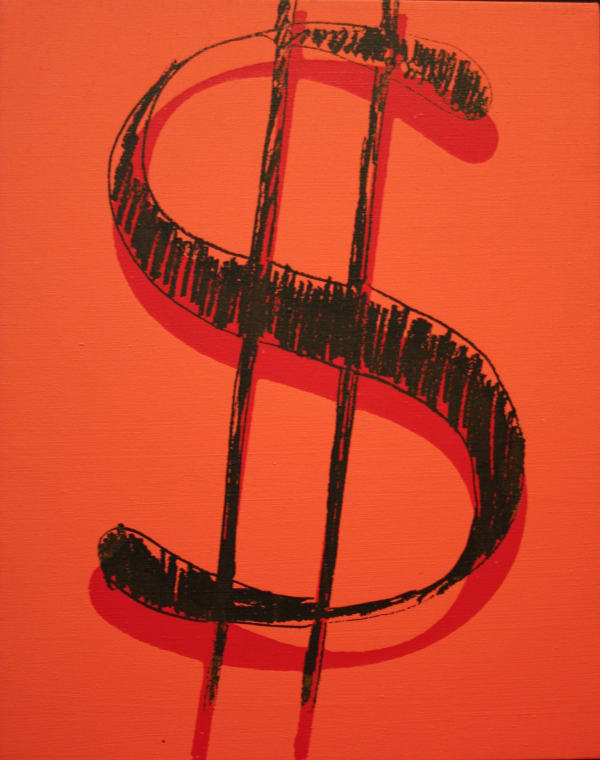Damien Hirst
Since the late 1980s, Damien Hirst has worked across installation, sculpture, painting, and drawing to explore the complex relationship between art, life, and death. His work interrogates belief systems including scientific, religious, and economic frameworks, and dissects the uncertainties that underpin human experience.
Hirst’s interest in death as an “unacceptable idea” emerged during his teenage years in Leeds. At sixteen, he began making regular visits to the anatomy department of Leeds Medical School to produce life drawings—a formative experience later echoed in the photographic work With Dead Head (1991). This period shaped his awareness of the contradiction inherent in confronting mortality through art.
At Goldsmiths College, Hirst redefined his understanding of sculpture and painting. He began work on the Medicine Cabinets in his second year, works that paired Minimalist aesthetics with a conceptual critique of pharmacological authority. These cabinets marked the beginning of Hirst’s long-running engagement with the idea of science as a surrogate for spiritual belief.
In 1991, he initiated his most iconic body of work, Natural History, in which preserved animals are suspended in steel and glass vitrines filled with formaldehyde. Among them, The Physical Impossibility of Death in the Mind of Someone Living (1991)—a tiger shark displayed at the Saatchi Gallery’s Young British Artists I exhibition—became an emblem of British art in the 1990s. The series exemplifies Hirst’s interest in how museum-like display mechanisms shape perception.
Over the decades, Hirst has continued to return to recurring themes including mortality, faith, beauty, science, and value. In 2007, he presented For the Love of God at White Cube, a platinum cast of a human skull set with 8,601 flawless pavé-set diamonds. Monumental and theatrical, the work underscores the tension between material permanence and spiritual transience.
Hirst has remained prolific into the 2020s. In 2021, he launched The Currency, a project that paired 10,000 unique dot paintings with NFTs, inviting collectors to choose between owning the physical artwork or its digital counterpart. The series interrogated notions of value and authenticity in an era of blockchain technology, although later scrutiny in 2024 questioned the originally stated creation dates of the works.
In 2024, The Light That Shines at Château La Coste in France presented nearly 90 works spanning five pavilions, revisiting and expanding on his major series. The same year, his Civilisation Paintings—dense, imaginary urban-scapes overgrown with flora—were exhibited at Phillips London, demonstrating a painterly evolution rooted in entropy and excess.
Most recently, in 2025, Hirst unveiled The Dreams, which reimagines his butterfly motifs using the dynamic, centrifugal energy of his Spin Paintings, merging themes of beauty, transience, and mechanical intervention.
To date, Hirst has held over 80 solo exhibitions globally, including The Dead and the Souls (2011) at Gow Langsford Gallery. His first major retrospective, The Agony and the Ecstasy, was staged in 2004 at the Museo Archeologico Nazionale in Naples. He received the Turner Prize in 1995 and remains one of the most influential and controversial figures in contemporary art. His work continues to provoke debate, reaffirming its place at the intersection of spectacle, theory, and the sublime.
-

Damien Hirst
8 Mar - 1 Apr 2017 Auckland CityFrom animals encased in formaldehyde, jewel encrusted skulls, and works adorned with the wings of butterflies, Damien Hirst’s approach to creating art is unprecedented. Playing with appearances, Hirst is a master of manipulating the human eye and what we traditionally associate with certain images.Read more -

Spring Catalogue 2011
Group Exhibition 31 Aug - 17 Sep 2011 Auckland City, Lorne Street [2008 - 2021]The Spring Catalogue has become an annual tradition at Gow Langsford Gallery. This year the catalogue exhibition boasts a stellar line up of works. Spring Catalogue 2011 brings together significant works from the local secondary market including paintings by Colin McCahon, Don Binney and Ralph Hotere, works by prominent contemporary international artists including Ai Wei Wei, Damien Hirst; shown alongside works from artists in the gallery stable, including Tony Cragg, Bernar Venet, John Pule, Max Gimblett and Judy Millar.Read more -

The Dead and the Souls
Damien Hirst 20 Jul - 17 Aug 2011 Lorne Street [2008 - 2021]Infamous for his wealth, celebrity and his record-breaking, bank-breaking auction prices, Damien Hirst has become somewhat the poster boy for British Art of his era. Rarely shown in this country, Auckland audiences will be treated to an exhibition of his work at Gow Langsford Gallery this winter. Although it may be difficult not to mention money when talking about Hirst, the exhibition The Dead and The Souls brings together a selection of editioned works, as well as some impressive originals, which will appeal to those with pockets shallower than Charles Saatchi's.Read more
The two bodies of editioned work on show, The Dead (2009) and The Souls (2010) envelop several of Hirst's well known concerns; death and life, beauty and desire with a dynamism typical of Hirst's work. The consecutive series are each made up of a few compositions in various colour-ways and each print is in an edition of only fifteen. In The Souls butterflies, as symbols for both the beauty of life and its impermanence, become metaphors for faith and death, while the skull imagery in The Dead make overt reference to mortality. Laid out like museum specimens and more or less anatomically correct Hirst has beautified his subjects through the use of block foil printing. "Of The Souls Hirst has said: I love butterflies because when they are dead they look alive. The foil block makes the butterflies have a feel similar to the actual butterflies in the way that they reflect the light. After The Dead I had to do the butterflies because you can't have one without the other". [Bracewell, M. (2010)]
The mass of imagery and scintillating colour creates spectacle, perhaps inevitable for Hirst, while collectively these works remind us of his power as an image maker and his enduring ability to captivate his audience.
As well as the two collections above we will be showcasing several of Hirst's sculptural Spin Skull works, three butterfly paintings and the impressive original, Beautiful Apollo Idealisation Painting. -

Gow Langsford Gallery Lorne Street Opening
Group Exhibition 26 - 31 May 2008 Lorne Street [2008 - 2021]Gow Langsford Gallery opened the doors of its new gallery premises at 26 Lorne St, Auckland on 20 May 2008, with a group exhibition; the highlight of which is a work by infamous UK artist, Damien Hirst. The work entitled Sacred XIV (2005) consists of a dagger piercing a pig’s heart and suspended in a tank of formaldehyde.Read more -

For The Love of God, Laugh and Dollar Sign
Damien Hirst and Andy Warhol 5 - 15 Feb 2008 Auckland CityFor the Love of God is possibly the most famous artwork produced in recent decades and is the latest feat of super-artist / necromancer Damien Hirst. The title inspired by...Read more







